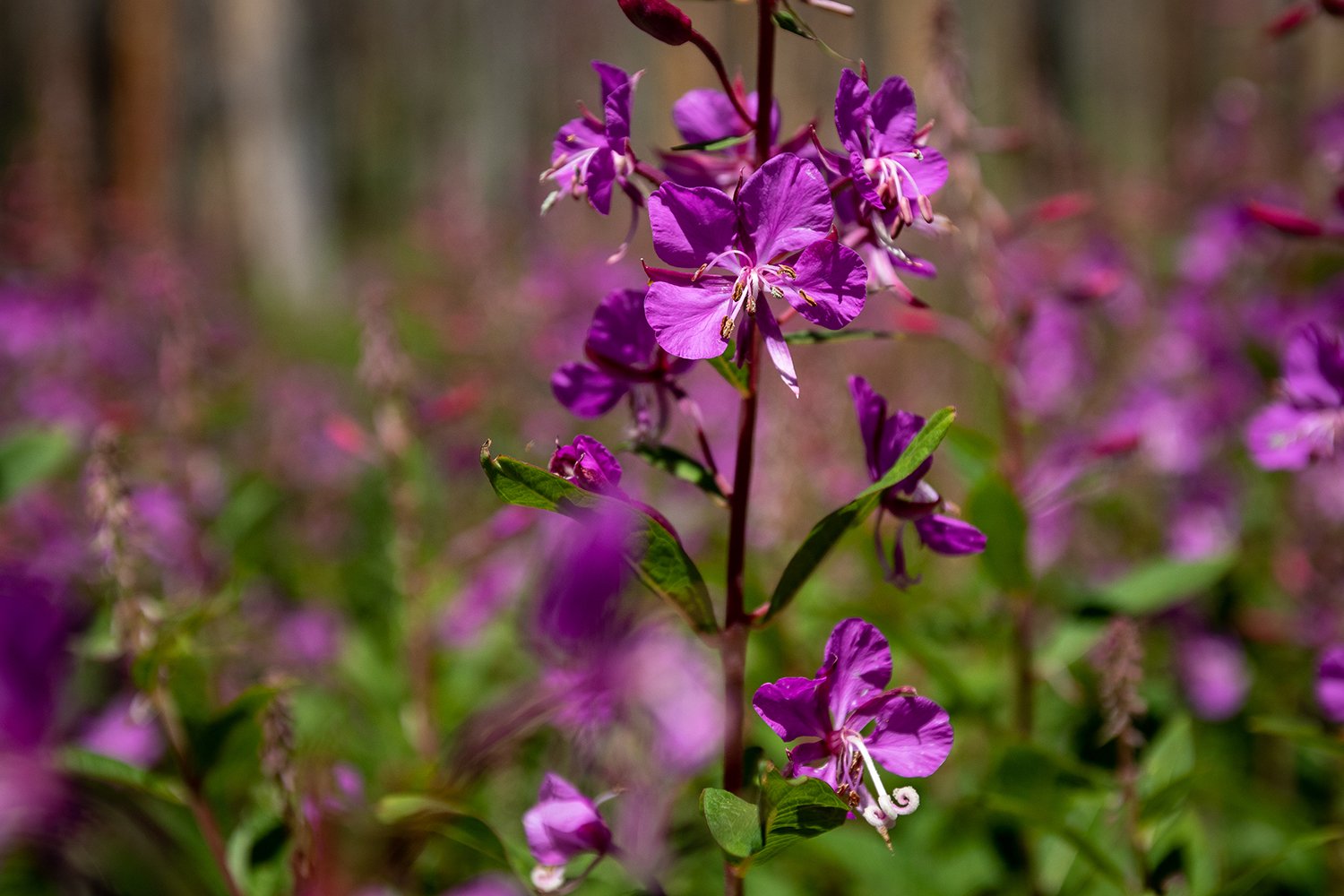5 Enchanting Wildflower Natural History Stories
More than just decorations and symbols of beauty, wildflowers are essential parts of our environment and even our lives. How they work and what they do is often overlooked. My love of wildflowers reached a new level when I started learning about the natural history of individual species and the enchanting and often mysterious way they’ve adapted in tandem with their pollinators; feed insects, birds, and humans; hold together soil; or produce healing medicine.
Enjoy a few natural history stories about wildflowers that have enchanted me.
Golden Columbine is a member of the Aquilegia genus that are most often found in woodlands and mountains throughout North America. Goldens are found in the desert, but originated from the cool, shady subalpine forests in the Rocky Mountains of yesteryear. As a "glacial relic" this plant holds the memory of an ancient world and how it has changed with it. During the last ice age, plants from the high mountains followed the tongues of glaciers out into areas of lower elevation where they established themselves in a climate that at the time was wetter and cooler. Once the glaciers retreated and the climate warmed, they were left behind and evolved to live in the few cool, shady habitats that were left: desert springs and shady recesses of hanging gardens.
Evening-Primroses are wonderful listeners. The saucer shape of the petals detect the specific frequency of vibration of its pollinators – moths and bumblebees – at which point the flower starts to produce more and sweeter nectar, knowing that when one pollinator arrives, there will soon be more. Thus, making itself very attractive to pollinators but conserving needed energy. The flowers open in the evening and close again in the morning before the heat of the day. Scientists from Telaviv University confirmed this, see their study here.
Calypso Orchid’s name comes from the Ancient Greek meaning “to conceal.” While the flower is a tiny artful masterpiece constructed to attract bumblebees, it hides behind its beauty the fact that it offers no nectar reward to its pollinators. These orchids bloom early in the season inviting naïve, freshly emerged worker bees to pollinate before they wise up and figure out the flower’s trick. Pollination rates are very low for this orchid, but a single pollinated flower can produce tens of thousands of seeds.
Clover’s Cactus
A rare and endangered species occurring only in New Mexico. The magenta flowers of the cactus bloom in late May and stay open only in the heat of the day, closing in late afternoon.
This plant has tightly adapted to one of the harshest landscapes in the Southwest - the badlands of the north west part of the state. It also only grows in sandy clay soils of the Nacimiento Formation - soils that are highly coveted and targeted by oil and gas development for fracking deep oil pockets. Oil and gas development is a significant current and active threat to most populations of the species, and especially to the largest population, which occurs in the vicinity of Lybrook badlands. The majority of known occupied sites and habitat occurs within areas of active oil and gas leases on BLM lands (80%). Additional threats include insect and rodent or rabbit herbivory, OHV traffic, grazing impacts, wood cutting, and climate change.
Fireweed
Wildflowers are often the first plants to recolonize an area after a wildfire. Many species of wildflowers release a lot of seeds which can sit in the ground for a long time creating a “seed bank.” When the trees burn, the shady canopy is removed allowing the sunlight to reach the ground and wildflowers to germinate.
Fireweed in particular are important for environmental recovery. In addition to seeds, fireweed reproduces through its specialized roots called “rhizomes.” As these roots spread through the forest, new plants emerge from the rhizomes. After a fire, when everything else is burned back, fireweed can reproduce quickly, resprouting from its roots. These flowers play an important role in holding the soil together, mitigating flooding and erosion from post-fire rains, so other plants can get established and the forest can rejuvenate after disturbances like wildfire.
In 2011, a wildfire burned several acres of spruce and fir forest near Pecos Baldy Lake. A few years after the fire, and for about five years, this area was dominated by fireweed, creating acres of the bright pink contrasted against the black burnt tree trunks. Flowers buzzed with plentiful pollinators. This year when I returned to this area, the fireweed was less prevalent as it has slowly given way to other species of wildflowers, shrubs, and seedling trees, emphasizing its role as one of the first plants to help a forest reestablish itself after fire.








